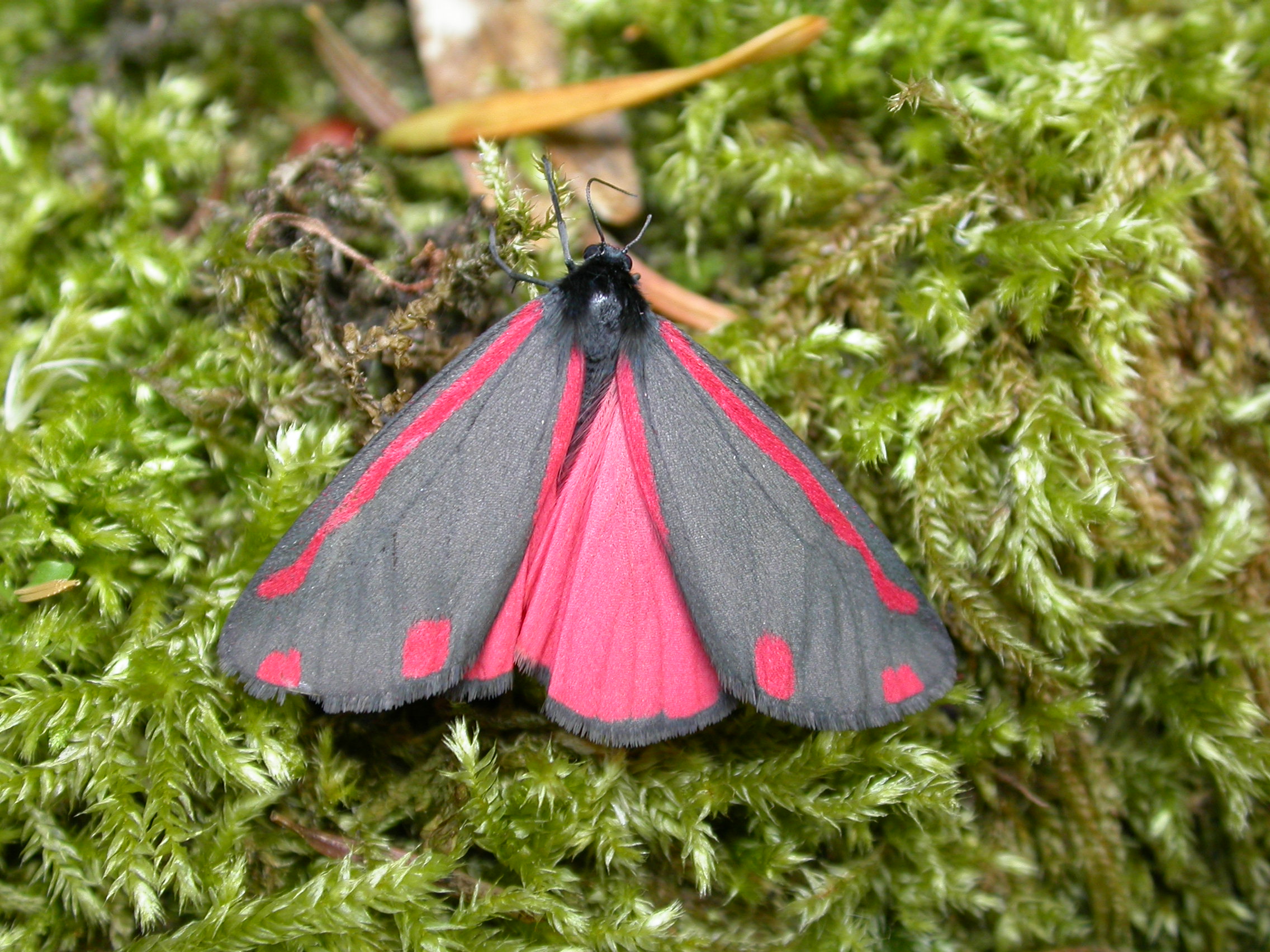Sickleholme Nature Notes
I seem to have spent much of June in the rough or peering into the pond. That may, of course, say something about the quality of my golf but those were certainly places where much of the wildlife interest occurred. Anyone venturing into the longer grass will have noted clouds of small grass moths (several species involved) and the occasional Chimney Sweeper which is a sooty-black moth with white wingtips. What caught the attention of several members, however, was the vivid red and black of the Cinnabar moth (see my photo image). Whilst many moths have cryptic patterns that act as camouflage this moth advertises to predators, via the bright colours, that it is nasty to eat and contains small doses of poison. The latter originates from its caterpillars which feast on Ragwort. Late in the month, the first Meadow Brown butterflies appeared to add one more to our still modest butterfly list for the year.
The rough also held plenty of examples of cuckoo-spit which recently spawned bizarre stories in the media about it spreading northwards and being dangerous. The reality is that it has always been widespread in the UK and is nothing more than a froth which surrounds the nymph of the Common Froghopper. This insect is so named because of its jumping ability and the froth was once believed to be created by Cuckoos.
The pond proved very productive with two new dragonfly species, neither of which I have noticed in previous years. One was a single Large Red Damselfly but more exciting was a number of Common Blue Damselfly, many of which were in the process of mating, so this may herald a long-lasting colony. The pond is certainly more overgrown now but that will be to the liking of some creatures.
There were plenty of bees and other pollinators to be seen, many loving the well-manicured planting around the tees, whilst the benefit of leaving some areas unmown was to be seen in the growing number of wildflowers now in bloom. Even the area around the spoil heap near the 6th tee looks very rich with the colours of Ox-eye Daisy, Field Buttercup and the first of the purple Betony flowers. Add in lots of young birds, fresh from the nest and with parent birds still having to feed many of them, and we had much to be grateful for as well as a very smart looking course.
Bryan Barnacle


